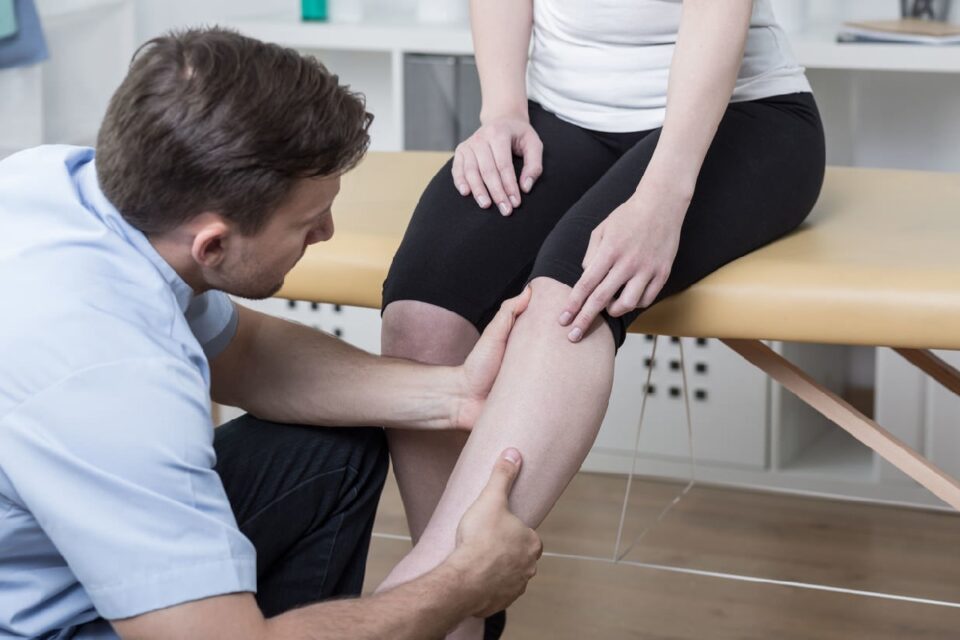Do you have a vein that bulges out on your leg? Do you experience pain, heaviness, or aching in your legs? You may have varicose veins.
Varicose veins are swollen veins seen just under the skin. They often occur in the legs, but they can also happen in other body parts. An NHLBI-funded study found that varicose veins were in two main categories: either near the skin’s surface without any blockages or valve problems or in deep veins along with valve problems or blockages.
This article will discuss the symptoms and signs and the best methods for treating varicose veins.
Table of Contents
What are Varicose Veins?
Varicose veins are enlarged, twisted veins that often appear on the legs. They can be painful and cause other symptoms, such as leg swelling and skin ulcers.
Here’s how they are formed:
The veins are responsible for carrying blood to the heart. If these valves don’t work properly, they can cause the blood to pool in your veins and form clots. It can lead to varicose veins.
Causes of Varicose Veins
Inherited Tendency
One of the reasons for varicose veins is an inherited tendency. If your parents or grandparents had varicose vein, you’re more likely to have them.
It happens mainly because some people have weaker valves in their veins. The valves keep blood flowing in the right direction — from your extremities back to your heart. When these valves are weak, blood can flow backward and pool in your veins. It causes the veins to stretch and become varicose.
Pregnancy And Childbirth
When you are pregnant, the extra weight from your baby can put pressure on your veins. It can cause varicose vein or make existing ones worse. After you have your baby, these veins may improve or go away.
If you suffer from varicose vein and are pregnant, talk to your doctor about ways to reduce your symptoms and prevent new ones from appearing in the future.
Obesity
If you are obese, your weight places extra pressure on the veins in your legs. As a result, it increases the likelihood of developing varicose veins. Losing weight may improve the appearance of existing varicose vein and help prevent new ones from forming.
Overweight people are more likely to develop deep vein thrombosis, a blood clot that forms in the deep veins of your legs. Deep vein thrombosis can be serious and may require hospitalization.
Losing weight may help improve varicose vein’ appearance and help prevent new ones from forming.
Aging
As you grow older, the skin becomes thinner and less elastic. As a result, it can cause the valves in your veins to weaken, allowing blood to pool in your veins and causing them to become varicose.
It is common because it is a degenerative process that happens over time.
Standing Or Sitting For Long Periods
Sometimes, your work or lifestyle might require you to stand or sit for long periods. Unfortunately, doing this often can put extra pressure on the valves in your veins and make your varicose vein worse.
Primary Symptoms of Varicose Veins
Some symptoms of varicose veins include:
-Aching or heavy feeling in your legs
-Ankle swelling
-Burning, throbbing, muscle cramping, and restless legs
-Heaviness, itching, or tingling in your legs
-Skin discoloration around the affected area
-Ulcers on your legs
If you have any of the above symptoms, it’s vital to see a doctor or vein specialist. They can properly diagnose your condition and recommend the best course of treatment.
Treatment Options for Varicose Veins
Here are some common options for treating varicose vein:
1) Compression stockings: These are special stockings that apply pressure to your legs and help improve blood flow. They can help reduce the pain and swelling associated with varicose vein.
2) Endovenous ablation therapy is a minimally invasive procedure that uses heat or lasers to destroy the damaged vein.
3) Sclerotherapy: This is a procedure where a chemical is injected into the vein to destroy it.
Here’s how sclerotherapy works:
The chemical irritates the vein lining, causing it to swell and stick together. As a result, it seals the vein and prevents blood from flowing through it.
Sclerotherapy is done in a doctor’s office or outpatient center. You can go home the same day.
Most people need more than one sclerotherapy treatment to get rid of all their varicose vein. You might have bruising and swelling after the procedure, but this should disappear within a few days.
Conclusion
Whether you are considering varicose vein treatment or have already decided to seek treatment, the first step is a consultation with a board-certified vascular surgeon. During your consultation, your surgeon will review your medical history and perform a physical examination. Your surgeon will also order diagnostic tests, if needed, to confirm the diagnosis of varicose veins.
Also Read:

